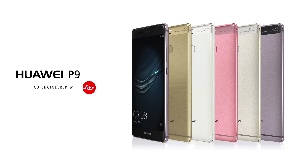Dumping their previous business model of flooding the planet with cheap, unbranded cellphones, China’s Huawei has risen to become a globally recognizable brand and a serious contender for Apple and Samsung.
Advancing rapidly into new markets worldwide, Huawei is now the world’s number three smartphone brand, with an 8.3 percent market share. Europe, in particular, has been receptive of Huawei, where the company is growing at an unprecedented clip on the back of better products and a new brand image.
Rising up from humble beginnings in Shenzhen in 1987, Huawei started out as a producer of phone switches. Growing up with the city’s nascent electronics industry, Huawei would became the global leader in telecommunications networks by 2012 — despite a ban by the US government and its knee-jerk ramifications.
However, where Huawei now stands to make the most waves is with its prime consumer product: smartphones. Last year, the company sold 108 million of them — which is still far behind Samsung and Apple, at 324 and 231 million units, respectively, but the gap is closing fast. This year, Huawei’s trajectory is looking even steeper, as quarter one saw 28.8 million phones sold, more than a 10 million unit year-on-year increase, while Samsung stayed flat and Apple actually went into decline.
This new global market position was obtained through a very active initiative to drastically increase the quality of their feature phones as well as major ad campaigns designed to let the world know that Huawei has arrived.
Huawei once found their niche selling handsets cheaper than the big brands of the world, reaching for low hanging fruit rather than the premium tiers soaring at the top of the consumer tree. My first Android device was a $100 Huawei that I picked up in 2012 in Jiangsu province. It was mediocre but cheap — a tagline that could sum up public sentiment about the brand at that time. But all of this has changed for Huawei.
“I went to my shop and they advised me instead of getting a Samsung maybe this Huawei is better,” said Bogdan Goralczyk, the Polish Sinologist, author, and former ambassador. “More and more people are starting to realize that it’s not as shit anymore, that it is not a fake product, that it is much better than we expected. It is changing the mentality of the people; they are starting to think, ‘China, wow, that’s impressive.’”
Huawei has also engaged in some very high-profile partnerships to develop some of their new products and features. Right next to the duel lenses of the P9 is written the word “Leica,” the name of the prominent German photography company who designed it. Huawei also produced Google’s Nexus 6P and is currently working with Swarovski to design a fashionable smartwatch for women.
Beyond China, where they are the undisputed number one smartphone brand, Huawei has advanced aggressively into new markets, with a heightened focus on Europe, where they are the continent’s number two Android phone and, in some markets, number two overall.
A full half of Huawei’s 100+ million handset sales and 65% of the company’s revenue last year derived from markets outside of China, as the company’s market share rapidly rose in countries like Germany, Italy, and Spain Huawei launched its new flagship phones, the P9 and P9 Plus, in London in April of this year.
The phones feature cutting edge duel-lens cameras, which allows in more light to improve photo quality, a better battery, innovative biometric fingerprint technology, a Kirin 955 2.5GHz 64-bit ARM-based processor, and a high-quality aluminum body with aesthetically pleasing and ergonomically contoured rounded corners. The phone is not only meant to function at the highest level and to push new features into the market, but to look good too — a major demand of the Chinese consumer in particular.
Huawei’s dramatic rise in European sales was initiated by an improvement in product quality but was also complimented by a very high profile advertising blitz. Ads and promotions for Huawei now cover the trams of Rotterdam, a flagship store sits in a prominent location in downtown Brussels, entire buildings are being covered with gigantic Huawei banners in places like Berlin and Lodz, Poland, the roadsides of major highways are speckled with billboards for Huawei, and the city center of Warsaw looks like an advertising convention where Huawei was the guest of honor.
This campaign has also included the sponsorship of popular soccer teams like Arsenal, AC Milan, and Paris Saint-Germain, endorsements from star European athletes like Lionel Messi and Robert Lewandowski, as well as key product launches in European cities. Basically, Huawei figured out what Europeans like and stuck their logo on it.
The Chinese electronics industry has been rapidly at work shifting not only their business models but the paradigm of how their products are perceived around the world. Following a strong push from China’s central government for more innovation, companies big and small have been working to establish signature products which not only represent the transition that they themselves have gone through but also that of China.
Business News of Monday, 20 June 2016
Source: forbes.com

















